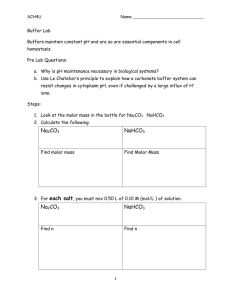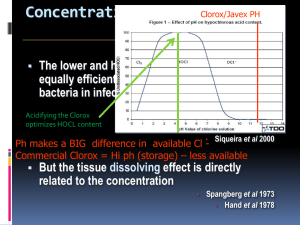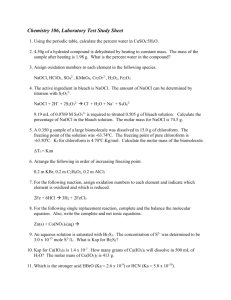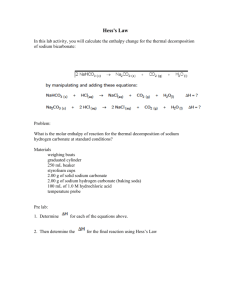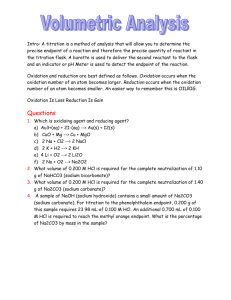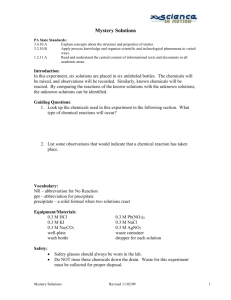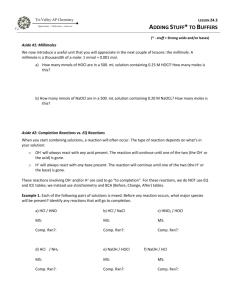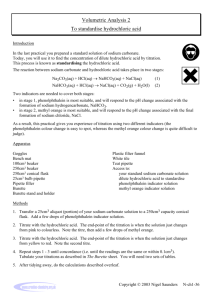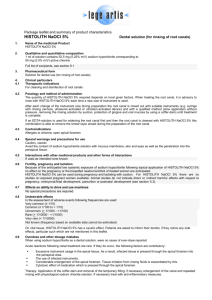Study of Chemical Changes
advertisement
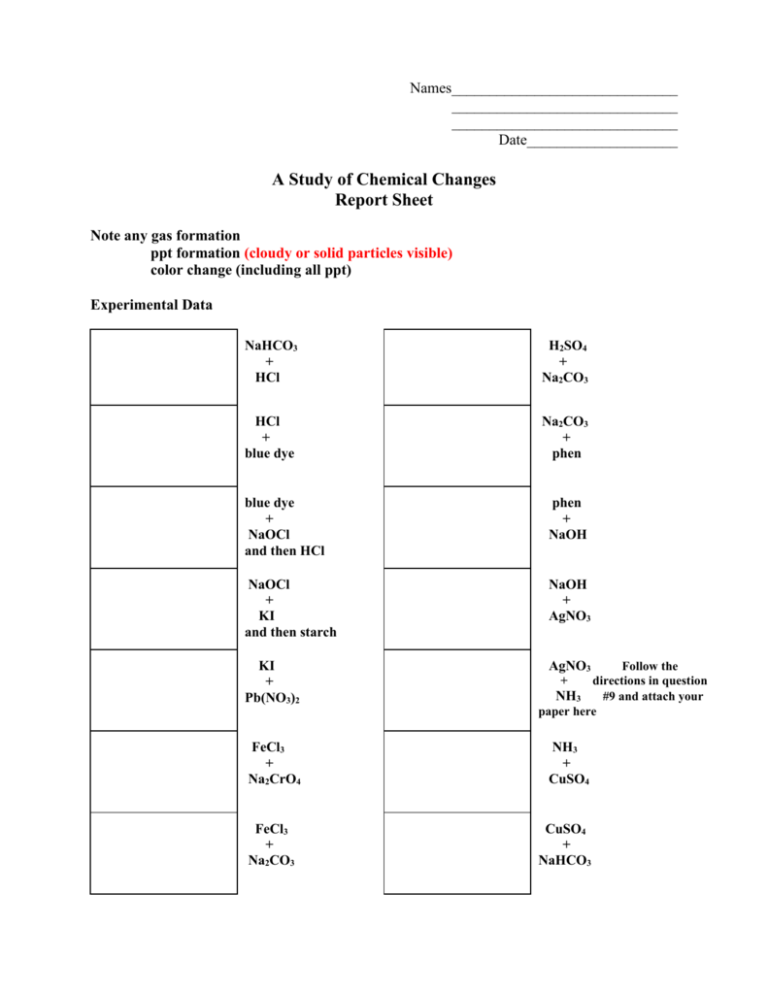
Names______________________________ ______________________________ ______________________________ Date____________________ A Study of Chemical Changes Report Sheet Note any gas formation ppt formation (cloudy or solid particles visible) color change (including all ppt) Experimental Data NaHCO3 + HCl H2SO4 + Na2CO3 HCl + blue dye Na2CO3 + phen blue dye + NaOCl and then HCl phen + NaOH NaOCl + KI and then starch NaOH + AgNO3 KI + Pb(NO3)2 AgNO3 FeCl3 + Na2CrO4 FeCl3 + Na2CO3 Follow the directions in question NH3 #9 and attach your paper here + NH3 + CuSO4 CuSO4 + NaHCO3 Questions: Use your experimental data and what you learned in this lab to answer the following questions: 1. Sodium hydrogen carbonate is baking soda, NaHCO3. When HCl is added to NaHCO3, carbon dioxide bubbles are formed. Write the formula for carbon dioxide. In what consumer product is this gas commonly found? 2. Which of the other mixings give a similar result? 3. The body uses hydrochloric acid, HCl, to help digest food. Where in the body is hydrochloric acid found? What color does blue food dye turn when hydrochloric acid is added? 4. Sodium hypochlorite, NaOCl, is a common ingredient in household bleaches and cleansers. What happens to the color of the blue dye when both HCl and NaOCl are added? 5. Potassium iodide, KI, is the source of iodine in iodized salt. What color is the KI + NaOCl mixture? What color does starch change to in the presence of KI and NaOCl? 6. A precipitate is a solid that separates upon mixing solutions. Which reaction produced a very bright yellow precipitate? 7. Which reactions produced a distinctive “muddy” brown precipitate? 8. What solution produced a deep purple color when mixed with other solutions? 9. Put your names on a small piece of paper and absorb some of the AgNO3 and NH3 mixture. Place the paper by the window for at least 10 minutes. What evidence do you see that silver compounds are light sensitive? Attach the paper on the front page of the report sheet using tape.
